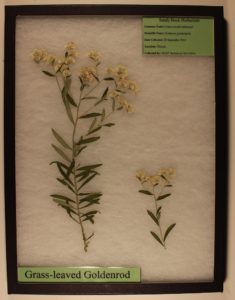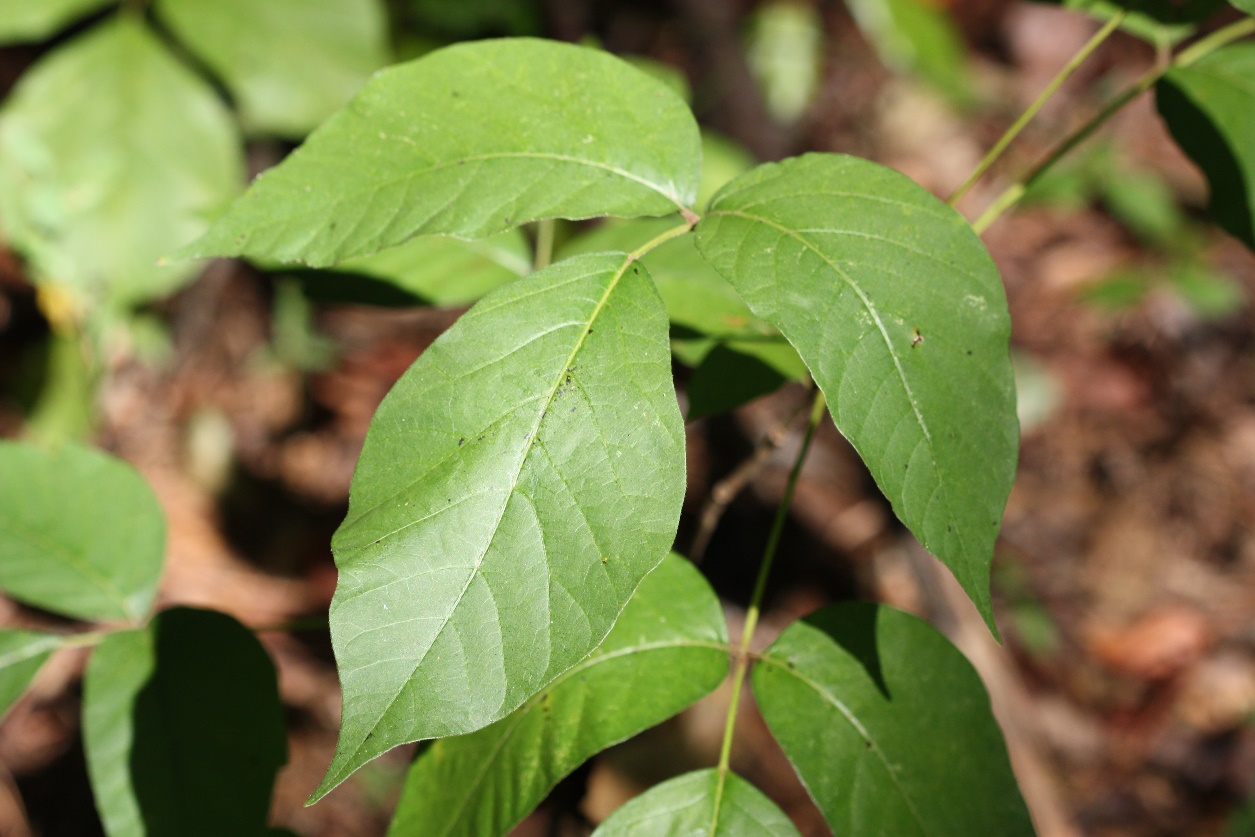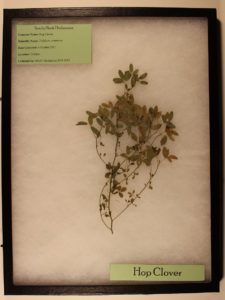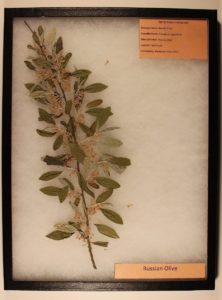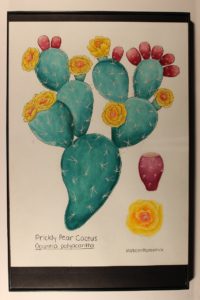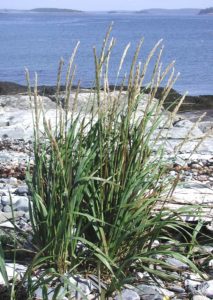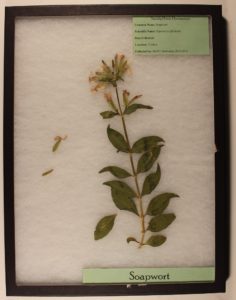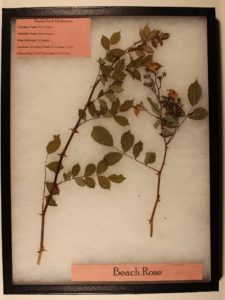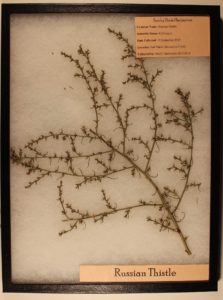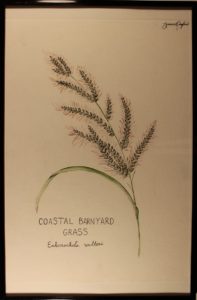Photo Courtesy of K. Hubeny
Plant Name Grass-leaved Goldenrod
Scientific name Euthamia graminifolia
Family Asteraceae
Vegetative Zone Thicket
Flowering Period Late summer through early fall
Identifying Characteristics A perennial flower, with long thin green leaves that are alternately arranged.
Description
Plant can grow up to about two to four feet.
Leaves are long. thin, green, and alternately arranged.
The stems are also green, typically the same shade as the leaves.
The leaves can be up to four inches long.
The flowers are composite, small, and yellow.
Scientific Name Toxicodendron radicans Common Names Poison Ivy Nativity Native; Generally found in the Thicket and Secondary Dune
Description
Each leaf has three sections, or leaflets Leaflets are often toothed or lobed, but can also be smooth-edged Coming in contact with the leaves or stem may cause an extensive rash on the affected area, and can spread to others through contact Treatment
Rash should fade after 2-3 weeks Over-the-counter treatments to alleviate oozing include calamine lotion, zinc carbonate, and zinc oxide To alleviate itchiness, apply baking soda or colloidal oatmeal to the skin
Photo Courtesy of K. Hubeny
Plant Name Hop Clover, Field Clover
Scientific name Trifolium campestre
Family Fabaceae
Vegetative Zone Thicket
Flowering Period Summer
Identifying Characteristics Green, or brown stems, with yellow flowers.
Description
Stems are thin and brown or green in color.
Can grow up to one foot tall.
Leaflets are are obvate, or obovate, and slightly dentate around the margin.
Can be found on savannas, pastures, abandoned fields,and vacant lots.
Photo Courtesy of K. Hubeny
Plant Name Russian Olive
Scientific name Elaeagnus angustifolia
Family Elaeagnaceae
Vegetative Zone Salt Marsh
Flowering Period Early Summer
Identifying Characteristics Alternate leaves, highly aromatic flowers in clusters of 1-3
Description
The Russian Olive is a deciduous tree that grows to about seven meters in height.
The leaves are alternate, 4-9 cm long, 1-2.5 cm wide, lanceolate, and have a smooth margin.
Flowers are about 1 cm long, with a four lobed yellow calyx.
Flowers are highly aromatic and grow in clusters of 1-3.
Flowers bloom in the early summer and are followed by cluster of fruit.
The fruit is small cherry-like drupe 1-1.7 cm long, and is orange-red covered in silvery scales.
Prickly Pear Cactus, Madison Pasterchick
Common Name(s) Prickly Pear Cactus
Scientific Name Opuntia Polyachantha
Family Opuntia
Location/Vegetative Zone Thicket/Secondary Dune
Flowering Period Late spring to early summer
Identifying Characteristics Have red, yellow, or purple flowers, and small barbed spines.
Description
Most have red, yellow, or purple flowers Grow from less than a foot to 6-7 feet All have fleshy pads Have small, barbed spines known as glochids Native plant
Medicinal/Edible Uses
Branches can be cooked and eaten as a vegetable Pectin in plants can reduce LDL (bad) cholesterol
Cultural Uses
Provides protective barrier against predators Juice extracted from pads is used to make mosquito repellents
Misc
Medical community interested in pectin More than 15 different types of varieties
Sources Osterbrink, Sara. “Eastern Prickly Pear Cactus”. University of Wisconsin La Crosse. Arcsin. Web.
“ Prickly Pear Cactus. ” Gale Encyclopedia of Alternative Medicine . . Encyclopedia.com. 30 Apr. 2018. Web.
(“American Lyme Grass.” Go Botany, gobotany.newenglandwild.org/species/leymus/mollis/.)
Common Name(s) American dune grass, American dune wild-rye, sea lyme-grass, strand-wheat, strand grass
Scientific Name Leymus mollis
Family Poaceae
Location/Vegetative Zone Primary Dunes
Flowering Period June-July
Identifying Characteristics Thick, shiny, needle-like leaves found in clumps
Description
Leaves
Green
Wheat-like on top when bloomed
Long, thick grass
Grow in groups
Can reach a height of 2-6 feet.
Have a fruiting period from summer to fall.
Distributed across the Eastern, Western, and Northern Coasts of North America, Greenland, and East Asia.
Cultural Uses
Used by Native Americans
Dried and used grass for basketry and weaving
The tough, sharp leaves could be used as a needle and thread
Misc
High disease resistance
Drought, burial, and salt tolerant
able to last harsh environmental conditions
Very adaptable
Sources
“American Dune Grass”. Monterey Bay Aquarium . Monterey Bay Aquarium Foundation. Web.
Photo Courtesy of K. Hubeny
Common Name(s) Soapwort, Bouncing-bet, Crow Soap, Soapweed
Scientific Name Saponaria officinalis
Family Caryophllales
Location/Vegetative Zone Thicket
Flowering Period May-September
Identifying Characteristics purple and white flowers, sweet smell, red-tinged stems without branches
Description
Leafy, unbranched stems with opposite leaves
leaves are between 4 and 12 cm long
grows in patches
Purple, sometimes white flowers that emit a sweet smelling nectar
Found in the thicket
Distributed across North America
Cultural Uses
Can be used as a strong soap
Especially useful for delicate fabrics
A natural soap and shampoo, but NOT in excess!
The Pennsylvania Dutch used it to make the foamy head on beer
Misc
Self-pollinates
Visited by bumblebees and hoverflies
Sources
Seward, Marc. “Benefits and Uses of Soapwort”. Healthy Focus. 8 April 2017. Web.
Bergeron, Karen and Deb Jackson. “Soapwort”. Altnature . Web.
Photo Courtesy of K. Hubeny
Common Name(s) Salt Marsh Rose, Beach Rose
Scientific Name Rosa rugosa
Family Rosaceae
Location/Vegetative Zone Secondary Dunes
Flowering Period Late Summer/Early Fall
Identifying Characteristics Short, sharp prickles
Description
Leaves
8-15 cm long
Corrugated surface
Stems
Densely covered in short, straight prickles
Flowers
Pleasantly scented
Dark pink to white
Grows in Eastern North America
Height of 3-6 feet
Edible Uses
Hips used to make jams and jellies
Cultural Uses
Ornamental
In Asia, used as potpourri
Sources “Rosa rugosa”. Wikipedia. Wikimedia Foundation. 21 February 2018. Web.
“Rosa rugosa”. Missouri Botanical Garden. Web.
Photo Courtesy of K. Hubeny
Common Name(s) Russian Thistle
Scientific Name Kali tragus
Family Chenopodiaceae
Location/Vegetative Zone Salt Marsh
Flowering Period July-October
Identifying Characteristics Bushy, 6 inches to 3 feet high
Description • Bushy annual forb/herb
Edible Uses
Seeds can be roasted/cooked and eaten
Young leaves and stems can be eaten raw or cooked
Sources
“Salsola tragus – L.”. Plants For A Future . Web.
Swearingen, J., C. Bargeron. 2016 Invasive Plant Atlas of the United States. University of Georgia Center for Invasive Species and Ecosystem Health.
Coastal Barnyard Grass, Jasmine Hoagland
Common Name(s) Coastal Barnyard Grass
Scientific Name Echinochloa walteri
Family Poaceae
Location/Vegetative Zone Salt Marsh
Flowering Period August – October
Identifying Characteristics Numerous erect spikes
Description
Distributed across Eastern North America.
Grows to a height of 3.5 to 6.5 feet.
Has a life span of approximately one year.
